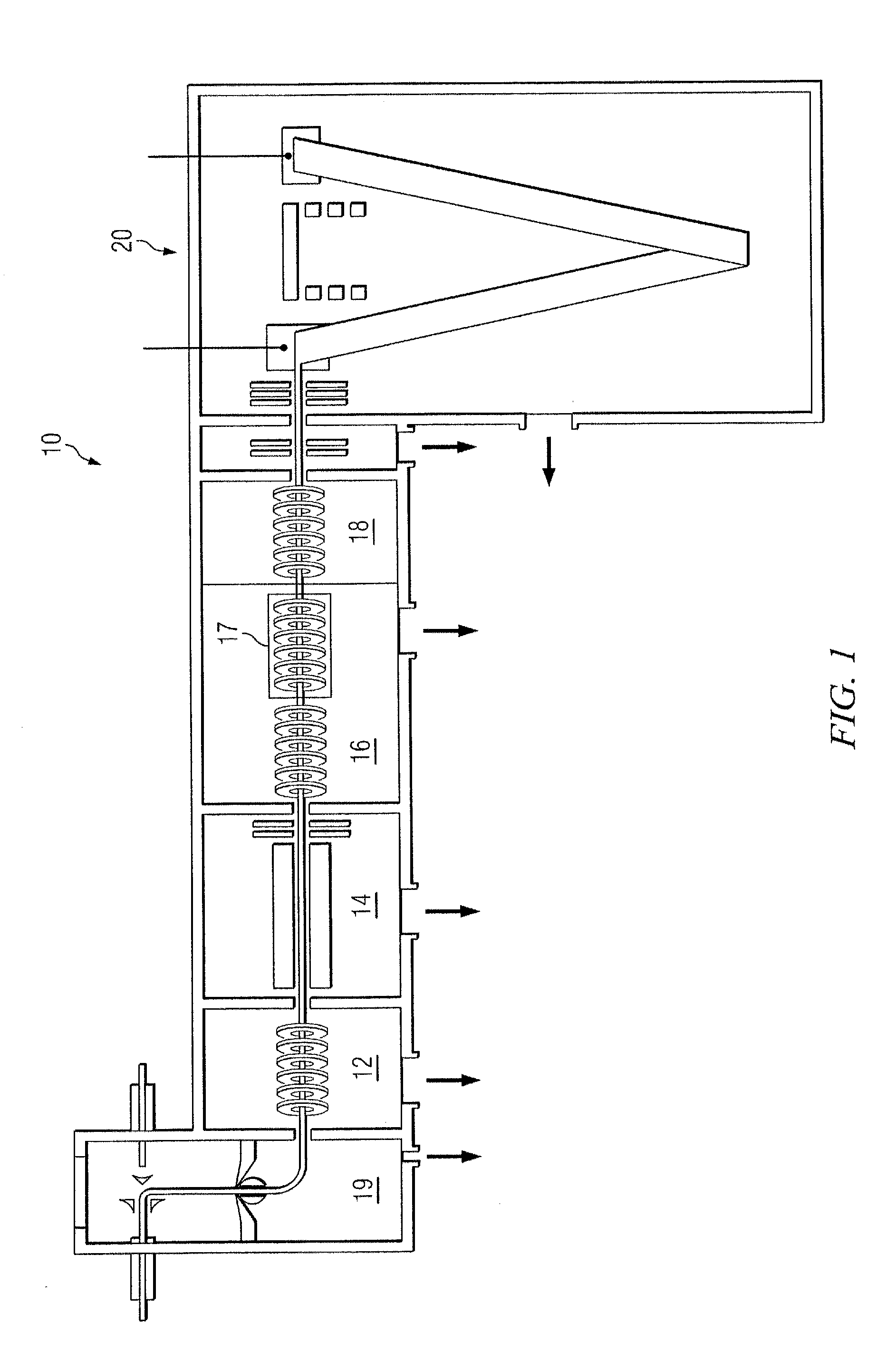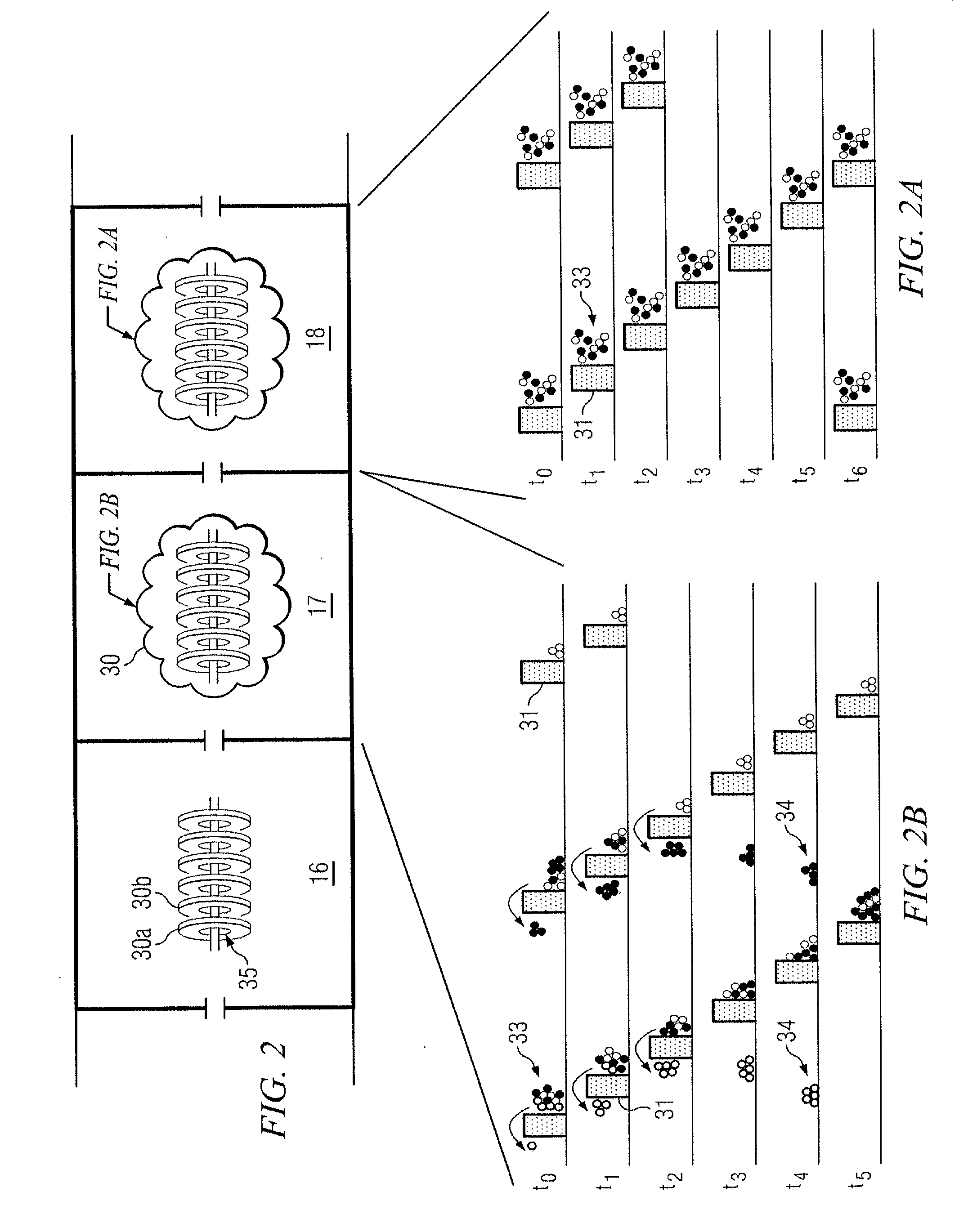Rapid gas-phase isotopic labeling for enhanced detection of protein conformations
a gas-phase isotopic labeling and protein technology, applied in the field of rapid gas-phase isotopic labeling for enhanced detection of protein conformations, can solve the problems of complex exchange kinetics, inability to provide spectrometry alone, and further complicating interpretation of hdx kinetics
- Summary
- Abstract
- Description
- Claims
- Application Information
AI Technical Summary
Benefits of technology
Problems solved by technology
Method used
Image
Examples
Embodiment Construction
[0040]U.S. provisional patent application No. 61 / 169,083 filed on Apr. 14, 2009 is incorporated herein in its entirety.
[0041]Referring to FIG. 1, a mass spectrometer (MS), e.g., a time-of-flight mass spectrometer (TOF-MS) such as the Synapt™ MS manufactured by Waters Corporation of Milford, Mass., is shown. The MS 10 includes an ion source 19, a first (source) traveling wave ion guide (TWIG) 12, a quadrupole 14, a trap-TWIG 16, a mobility-TWIG 17, a transfer-TWIG 18, and a time-of flight (TOF) detector 20. The functions of the detector 20 and the ion source 19 of the MS 10 are well known and will not be described in great detail except as necessary to describe their interaction with the TWIGs 12, 16, 17, and 18.
[0042]The intermediate pressure environment of an ion in a traveling wave is highly suited for very fast, localized deuterium labeling. By performing “curtain” labeling in the source-TWIG 12, the trap-TWIG 16, the mobility-TWIG 17 or the transfer-TWIG 18, protein ions are pro...
PUM
 Login to View More
Login to View More Abstract
Description
Claims
Application Information
 Login to View More
Login to View More - R&D
- Intellectual Property
- Life Sciences
- Materials
- Tech Scout
- Unparalleled Data Quality
- Higher Quality Content
- 60% Fewer Hallucinations
Browse by: Latest US Patents, China's latest patents, Technical Efficacy Thesaurus, Application Domain, Technology Topic, Popular Technical Reports.
© 2025 PatSnap. All rights reserved.Legal|Privacy policy|Modern Slavery Act Transparency Statement|Sitemap|About US| Contact US: help@patsnap.com



